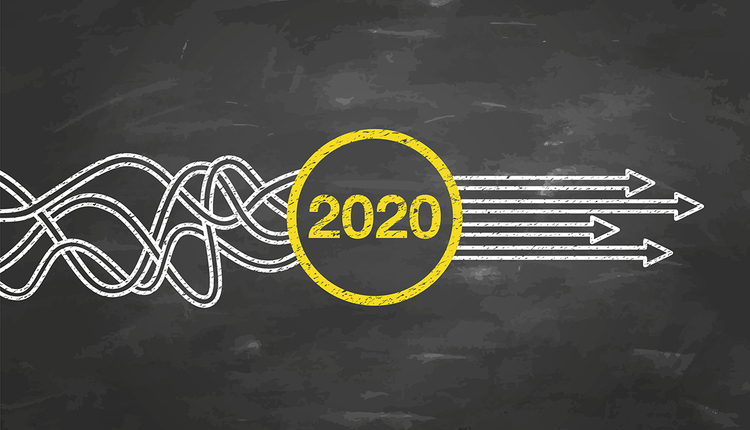If you manage a parcel expense budget, 2020 has likely left you searching for answers, often landing on a Magic 8-Ball response of “Ask again later.” Unfortunately, parcel expense management is likely to become more challenging in 2021.
But all is not lost. Executing a diligent budgeting process in Q4 can provide valuable insight into the expense risks and (potential) cost savings opportunities to mitigate 2021 bottom line impact.
Below are three key areas of focus to consider when building your 2021 parcel expense budget.
1. Parcel Budgeting Basics
Year-Over-Year (YOY) service mix and package characteristics
This budgeting staple is more critical than ever, given the economic volatility and impact on revenue forecasts, let alone parcel volume. Contributing factors to YOY cost per package (CPP) variance is the focus. Key data points to measure include:
-Carrier service volume mix: Did volume shift from Ground to Air, or Commercial to Residential? Were more deferred services used versus last year?
-Package weight and zone: What changes occurred with average package weight, and did these changes affect service volume mix (e.g. shift to <1lb services)? If average zone changed, what was the CPP impact?
While the “what” of this process is important, the “why” may be the most critical aspect. Taking the basic example of a volume shift from Ground to Air, say in Q2 of 2020, calculating the cost impact is pretty straight forward. However, if the root cause of this shift is not captured and incorporated into the 2021 budget (either by normalizing if it was an anomaly, or including in Q2 if it is validated), it may lead to unnecessary research and budget inaccuracies.
2020 milestones, variances, and anomalies
Identifying events or milestones that triggered expense changes, measuring the duration and quantifying the expense impact, as well as determining if these events will be repeated in 2021 is required. Carrier rate changes fall into this category. Scheduled rate increases, via a carrier contract and/or a General Rate Increase (GRI), should be notated, as should unplanned rate increases that may have occurred (e.g. UPS and FedEx peak surcharges).
Additionally, the parcel expense impact of significant 2020 operational changes, such as adjustments to distribution center operations or closing store locations, should also be taken into consideration when planning 2021 expense.
Risks and opportunities
Incorporating risks and opportunities into the budgeting process is intended to provide guidance on potential budget variance, but these items are not defined well enough to include as an actual budget item.
Examples of risks include higher than expected carrier rate increases, loss of pricing discounts due to decreased volume, and increased expedited shipping expense (e.g. due to order processing delays).
Despite the gloomy expense outlook, budget opportunities may exist as well, and can include carrier rate reductions (through an RFP), shifting volume to more deferred services, and reducing split shipments. Again, these are items are prospective and not yet executed (although possibly planned).
2. Rate Increase Forecast
Performing a rate increase forecast can provide a well-grounded budget baseline. Performing this exercise also provides a more granular hindsight view when measuring budget expense variance.
A rate increase forecast should include both base rates and accessorial charges (each should be broken out by carrier and/or service):
-Base rate increases: Both the percentage increase and calculated CPP increase, as well as effective date (scheduled carrier GRI and/or contract effective date) should be included.
-Accessorials: Identify the highest impact accessorial charges (e.g. residential delivery, fuel surcharge), estimate the net charge increase amount (drawing on recent annual increases), and budget as a CPP increase.
The process of forecasting GRI and accessorial increases can be daunting for those who have not done so previously. Below is an example of a basic table used to calculate a portion of 2020 rate increases for three FedEx services. Please note, this example is not precise as the pricing components shown are calculated separately and do not take into account compounding effects of some charges (e.g. fuel surcharge).
| Base Rate Increase | ||||||
| Service | 2020 Trans CPP | Rate Cap | 2021 Incr | 2021 Trans CPP | ||
| FedEx Standard Overnight | $16.00 | 4.5% | $0.72 | $16.72 | ||
| FedEx 2 Day | $13.00 | 4.5% | $0.59 | $13.59 | ||
| FedEx Home Delivery | $9.00 | 4.5% | $0.41 | $9.41 | ||
| Residential Delivery | ||||||
| Service | 2020 List Rate | Disc % | 2020 Net | 2021 List Rate | 2021 Net | 2021 Incr |
| FedEx Standard Overnight | $4.65 | 50% | $2.33 | $4.90 | $2.45 | $0.13 |
| FedEx 2 Day | $4.65 | 50% | $2.33 | $4.90 | $2.45 | $0.13 |
| FedEx Home Delivery | $4.00 | 50% | $2.00 | $4.25 | $2.13 | $0.13 |
TIP: If you have a third-party parcel expense management provider in place, enlist their services and expertise to advise on and/or perform this process.
3. 2021 Parcel Pricing Outlook (“not so good”)
Unfortunately for parcel shippers, many of the 2020 parcel expense impacts may continue into 2021, and perhaps indefinitely, as parcel carriers continue to implement pricing strategies to combat rising costs and retain margin. Below is a high-level view of 2021 parcel expense headwinds, to which the Magic 8-Ball response is “As I See It, Yes.”
Increasing GRIs
While UPS and FedEx may find other means of implementing greater rate increases compared to previous years (see below), it is not unreasonable to think that the “average” 4.9% base rate increase we have seen in recent years could soon be viewed as a bargain. However, the annual USPS rate increase (often announced in October and, pending PRC approval, effective in late January) also bears significant risk for shippers. Mounting USPS financial losses, new leadership, and continued external pressure could result in significant rate increases for direct USPS products (Priority Mail, First Class Package) and Parcel Select services utilized by postal workshare partners (e.g. UPS SurePost).
Sustained peak surcharges
Although these surcharges are a misnomer, (unless we are now considering any period of high volume “peak”), given that elevated parcel volume levels are here to stay, parcel carriers have no incentive to relax or remove peak surcharges. In fact, it would not be surprising to see some of the qualifying criteria (assessed by shipper as increased volume compared to early 2020 levels) removed ahead of what is usually considered peak season (five weeks in Nov/Dec), and some form of broadly applied “peak” surcharges continuing indefinitely. For budgeting purposes, a prudent approach is to include an assumed peak surcharge for the full 2021 budget year.
Sustained suspension of Guaranteed Service Refunds (GSR)
Speaking of indefinite changes, will GSRs, which were suspended in March by UPS and FedEx, be reinstated by 2021 (or ever)? If incorporating the answer into a 2021 parcel budget, I would plan on “Don’t Count on It.” Carriers continue to be challenged by higher and less predictable volume levels, leading to less consistent delivery performance. Until or unless carrier performance stabilizes, GSRs will not return.
Developing an effective 2021 parcel budget will be challenging, even for the most experienced finance professional. However, using a combination of basic budgeting principles and parcel pricing expertise, will enable you to avoid the Magic 8-Ball response of “Cannot Predict Now” and perhaps even reach “You May Rely On It” status.
Nate Skiver is the founder of Level Playing Field Spend Management, a parcel consulting company which provides value for its clients through creating parcel shipping programs which reduce expense, while delivering a positive customer experience. Prior to founding Level Playing Field, he spent more than 15 years focused on building, executing, and managing parcel transportation programs for leading global apparel companies. He is also a member of our PARCEL Forum Advisory Board. He can be reached at nate@lpfspendmanagement.com or visit www.lpfspendmanagement.com for more information.
This article originally appeared in the September/October, 2020 issue of PARCEL.
















